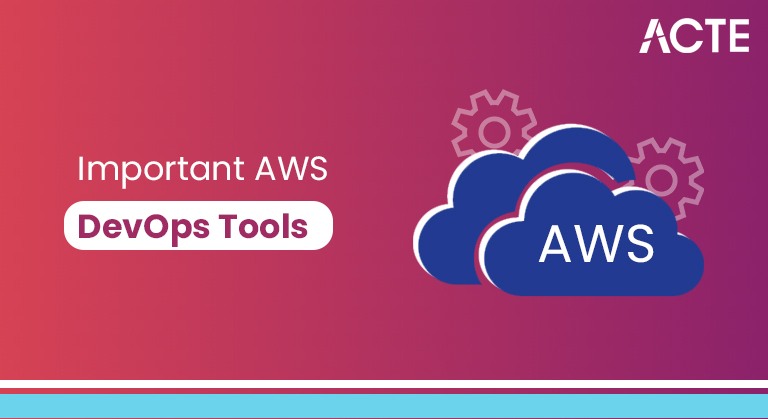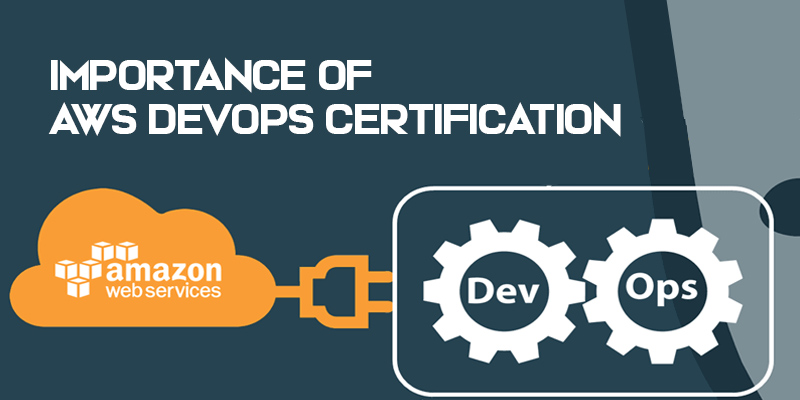The Role of AWS DevOps in Modern IT Infrastructure Management
AWS DevOps plays a pivotal role in managing modern IT infrastructure, offering a set of practices and tools that streamline software development and operations. By integrating development and operations, AWS DevOps enables organizations to create, deploy, and manage applications rapidly and reliably. In today’s fast-paced digital landscape, businesses demand quicker time-to-market, increased efficiency, and scalability. AWS DevOps addresses these needs by promoting collaboration, automation, and continuous improvement. AWS DevOps encompasses various key concepts, such as continuous integration, continuous delivery, and infrastructure as code. These principles empower organizations to build, test, and deploy software changes frequently and consistently, reducing the risk of errors and downtime. Moreover, AWS DevOps facilitates the management of complex IT infrastructures by treating infrastructure as code. This approach allows developers to manage infrastructure using the same versioning and testing tools they use for application code. As a result, AWS DevOps significantly enhances infrastructure reliability, scalability, and security.
Understanding AWS DevOps: Key Concepts and Components
AWS DevOps is a powerful approach that combines various concepts and components to optimize software development and operations. At its core, AWS DevOps emphasizes continuous integration, continuous delivery, and infrastructure as code. Continuous Integration (CI) is a practice that encourages developers to merge their code changes frequently into a shared repository. By doing so, teams can detect and address integration issues early, ensuring smooth collaboration and reducing the risk of conflicts. Continuous Delivery (CD) is an extension of CI, focusing on automating the software release process. CD enables teams to deploy software changes quickly and reliably, minimizing manual intervention and reducing the potential for human error. Infrastructure as Code (IaC) is a paradigm that treats infrastructure as if it were software. IaC allows developers to manage and provision infrastructure using the same tools and processes they use for application code. This approach enhances infrastructure reliability, scalability, and security, as it enables version control, automated testing, and easy replication. By embracing these key concepts, AWS DevOps empowers organizations to create, deploy, and manage applications and infrastructure more efficiently, fostering innovation, and accelerating time-to-market.
Top AWS DevOps Tools and Services for Streamlined Operations
AWS offers a wide array of DevOps tools and services designed to streamline operations and enhance productivity. Among these, AWS CodePipeline, AWS CodeBuild, and AWS CodeDeploy are particularly noteworthy. AWS CodePipeline is a fully managed continuous delivery service that automates your software release process. By integrating with popular source control systems and other AWS services, CodePipeline enables you to model, visualize, and automate your software delivery process, ensuring faster and more reliable deployments. AWS CodeBuild is a fully managed build service that compiles source code, runs tests, and produces software packages. CodeBuild supports multiple programming languages, including Java, Python, Ruby, Node.js, and .NET, and integrates seamlessly with other AWS services, enabling you to build, test, and deploy your applications quickly and efficiently. AWS CodeDeploy is a fully managed deployment service that automates software deployments to a variety of compute services, such as Amazon EC2, AWS Fargate, and AWS Lambda. CodeDeploy simplifies the deployment process, allowing you to easily launch new features, update applications, and roll back changes as needed, ensuring high availability and minimal downtime. By leveraging these powerful AWS DevOps tools and services, organizations can significantly improve their software delivery process, reducing manual intervention, and increasing efficiency, scalability, and reliability.
How to Implement AWS DevOps: Best Practices and Strategies
Implementing AWS DevOps effectively requires careful planning, execution, and adherence to best practices. Here are some key strategies to consider when adopting AWS DevOps: Version Control: Implement version control to manage your application code and infrastructure as code. AWS CodeCommit is a fully managed source control service that makes it easy to host secure and scalable repositories. By using version control, you can track changes, collaborate with your team, and revert to previous versions if needed. Automated Testing: Automate testing to ensure code quality and reduce manual intervention. AWS provides various services, such as AWS Device Farm and AWS CodeBuild, to test applications on a variety of devices and platforms. Automated testing helps identify issues early in the development cycle, reducing the risk of errors and downtime. Monitoring: Monitor your applications and infrastructure continuously to ensure optimal performance and security. AWS offers various monitoring tools, such as Amazon CloudWatch and AWS X-Ray, to help you track metrics, collect and analyze log data, and identify performance bottlenecks. Continuous Integration and Continuous Delivery: Implement continuous integration and continuous delivery to automate the build, test, and deployment process. AWS CodePipeline and AWS CodeBuild can help you create a seamless and efficient workflow, enabling you to release software updates quickly and reliably. Infrastructure as Code: Adopt infrastructure as code to manage your infrastructure using the same tools and processes you use for application code. AWS CloudFormation and AWS Service Catalog allow you to create, update, and delete infrastructure resources in a safe and predictable manner. By following these best practices and strategies, organizations can successfully implement AWS DevOps, reaping the benefits of increased efficiency, scalability, and reliability.
Real-World AWS DevOps Success Stories: Case Studies and Lessons Learned
Exploring real-world AWS DevOps success stories can provide valuable insights and lessons learned for organizations looking to adopt this powerful approach. Here, we will discuss two case studies: a media company and an e-commerce platform. Media Company: This media company aimed to modernize its IT infrastructure and streamline its software delivery process. By adopting AWS DevOps practices, such as infrastructure as code and continuous delivery, the company significantly reduced deployment times from weeks to minutes. This accelerated time-to-market allowed the company to respond quickly to market demands and improve overall customer experience. E-Commerce Platform: This e-commerce platform sought to enhance its application performance and scalability during peak shopping seasons. By implementing AWS DevOps tools, such as AWS CodePipeline and AWS CodeBuild, the company automated its build, test, and deployment processes. This automation resulted in a more efficient and reliable software delivery process, enabling the platform to handle increased traffic and maintain high availability during peak periods. These case studies demonstrate the potential benefits of AWS DevOps, such as increased efficiency, scalability, and reliability. However, they also highlight the importance of careful planning, execution, and continuous improvement to ensure long-term success.
Navigating AWS DevOps Certification: Tips and Recommendations
AWS DevOps certification demonstrates your expertise in AWS DevOps practices and tools, making you a valuable asset for organizations adopting this approach. Here are some tips and recommendations for navigating AWS DevOps certification: Choose the Right Certification: AWS offers two DevOps certifications: AWS Certified DevOps Engineer – Professional and AWS DevOps Engineer – Practitioner. The Professional certification is designed for experienced DevOps professionals, while the Practitioner certification is for those new to DevOps or looking to gain foundational knowledge. Prepare with Recommended Learning Paths: AWS provides recommended learning paths for each certification, which include online courses, labs, and whitepapers. These resources cover essential AWS DevOps concepts and help you gain hands-on experience with AWS tools and services. Practice with Hands-On Labs: Hands-on labs offer an interactive way to learn AWS DevOps practices and tools. By completing these labs, you can gain practical experience and improve your understanding of key concepts. Take Practice Exams: AWS offers practice exams to help you assess your readiness for the certification exam. These exams provide valuable feedback on your strengths and weaknesses, allowing you to focus your study efforts effectively. Review Exam Tips: To maximize your chances of success, review exam tips and strategies. These resources can help you understand the exam format, question types, and time management techniques. By following these tips and recommendations, you can successfully navigate AWS DevOps certification and demonstrate your expertise in this growing field.
Staying Updated with AWS DevOps: News, Trends, and Upcoming Features
Staying informed about the latest AWS DevOps news, trends, and upcoming features is crucial for professionals looking to maximize their expertise and deliver optimal solutions. Here are some suggestions on how to stay updated with AWS DevOps: Follow AWS DevOps Blog: The official AWS DevOps Blog is an excellent resource for staying updated on the latest AWS DevOps news, announcements, and best practices. By following this blog, you can learn about new features, tools, and services related to AWS DevOps. Attend AWS DevOps Events: AWS organizes various events, such as AWS re:Invent, AWS Summits, and AWS online tech talks, where they announce new features and share insights on AWS DevOps. Attending these events can help you stay informed and connect with other AWS DevOps professionals. Join AWS DevOps Community: The AWS DevOps Community is a great place to connect with other AWS DevOps practitioners, share knowledge, and learn about new developments. By participating in this community, you can stay updated on the latest trends and best practices in AWS DevOps. Monitor AWS Release Notes: Regularly monitoring the AWS release notes can help you stay informed about new features, updates, and bug fixes related to AWS DevOps tools and services. Follow AWS DevOps Influencers: Following AWS DevOps influencers on social media platforms, such as Twitter and LinkedIn, can help you stay updated on the latest news, trends, and best practices in AWS DevOps. By following these suggestions, you can stay updated with AWS DevOps, ensuring that you are well-informed and equipped to deliver the best possible solutions for your organization.
AWS DevOps vs. Traditional IT Operations: Comparing Approaches and Outcomes
AWS DevOps and traditional IT operations represent two different approaches to managing IT infrastructure and software delivery. Understanding the differences between these two methodologies can help organizations make informed decisions about their IT operations strategy. Approach: Traditional IT operations typically follow a siloed approach, where development and operations teams work separately, often leading to miscommunication, delays, and increased risk. In contrast, AWS DevOps promotes a collaborative approach, where development and operations teams work together to streamline software delivery and improve infrastructure management. Benefits: AWS DevOps offers several benefits over traditional IT operations, including increased efficiency, scalability, and reliability. By automating repetitive tasks, such as testing, deployment, and infrastructure management, organizations can reduce manual intervention, minimize errors, and accelerate time-to-market. Challenges: Implementing AWS DevOps requires a cultural shift, which can be challenging for organizations used to traditional IT operations. Overcoming resistance to change, building cross-functional teams, and adopting new tools and processes can be challenging but are essential for successful AWS DevOps adoption. Tools and Services: AWS provides a wide range of tools and services, such as AWS CodePipeline, AWS CodeBuild, and AWS CodeDeploy, that support the AWS DevOps approach. These tools enable organizations to automate software delivery and infrastructure management, improving efficiency and reducing errors. Best Practices: To successfully adopt AWS DevOps, organizations should follow best practices, such as implementing version control, automated testing, and monitoring. These practices can help organizations ensure the quality, security, and reliability of their software and infrastructure. In conclusion, while traditional IT operations have been the norm for many organizations, the AWS DevOps approach offers several benefits that can help organizations improve their IT infrastructure management and software delivery. By adopting AWS DevOps best practices and tools, organizations can increase efficiency, scalability, and reliability, ultimately leading to better outcomes.






